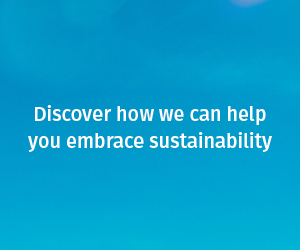Cruising the EV Super Highway
We set out to discover if driving an EV from Coolangatta to Cairns on the Queensland Electric Super Highway was really all that super.
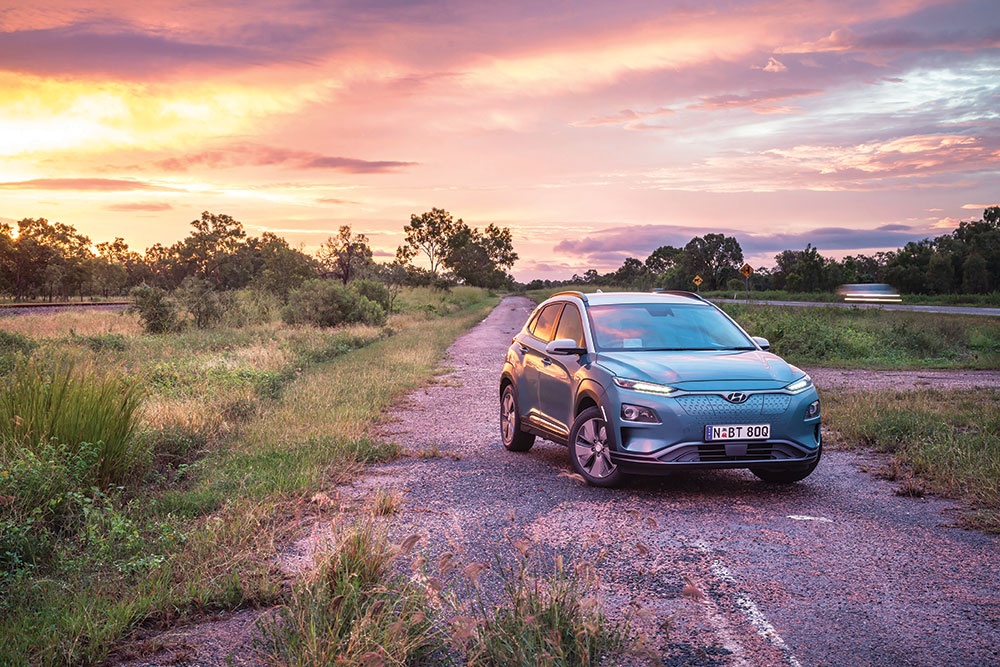
Electric vehicles (EVs) still represent only a small percentage of new cars sold in Australia, but they are poised to become a much larger part of that mix.
The Queensland Government has added to their appeal, already boosted by record-high fuel prices, by offering a $3,000 rebate to buyers of EVs to the value of $58,000.
However, are EVs something the average Queenslander could contemplate using?
Certainly not without appropriate infrastructure and in this regard, the State Government stole a march on its interstate counterparts by establishing the Queensland Electric Super Highway in partnership with RACQ and energy company Yurika.
This network of EV fast-charging stations, stretching from Coolangatta to Port Douglas and inland from Brisbane to Toowoomba, was completed in February 2018.
The State Government is now extending the network west. Once complete, it will see 18 fast chargers installed on routes from Brisbane to Mount Isa (via Dinosaur Trail locations), Goondiwindi to Emerald and Longreach to Cairns.
We “road tested” the Coolangatta to Cairns stretch of the network with Hyundai’s Kona EV, a compact SUV with a claimed fully electric range of 400km highway or 450km urban.
Hyundai Kona put to the test
The Kona’s impressive credentials encouraged us to tackle the trip, to see if an EV can be trusted to cover such distances efficiently and reliably.
After starting in Coolangatta, our first stop was at the headquarters of Tritium, in the Brisbane suburb of Murrarie, whose 50kWh DC fast chargers we would be using to travel north.
Tritium’s units can recharge the Kona’s 64kWh lithium-ion polymer battery to 90 percent capacity in 60 to 90 minutes, which is about as long as anyone wants to be waiting.
On the Bruce Highway, the Kona impressed with its quietness and performance, cruising effortlessly at 100km/h with strong reserves for overtaking.
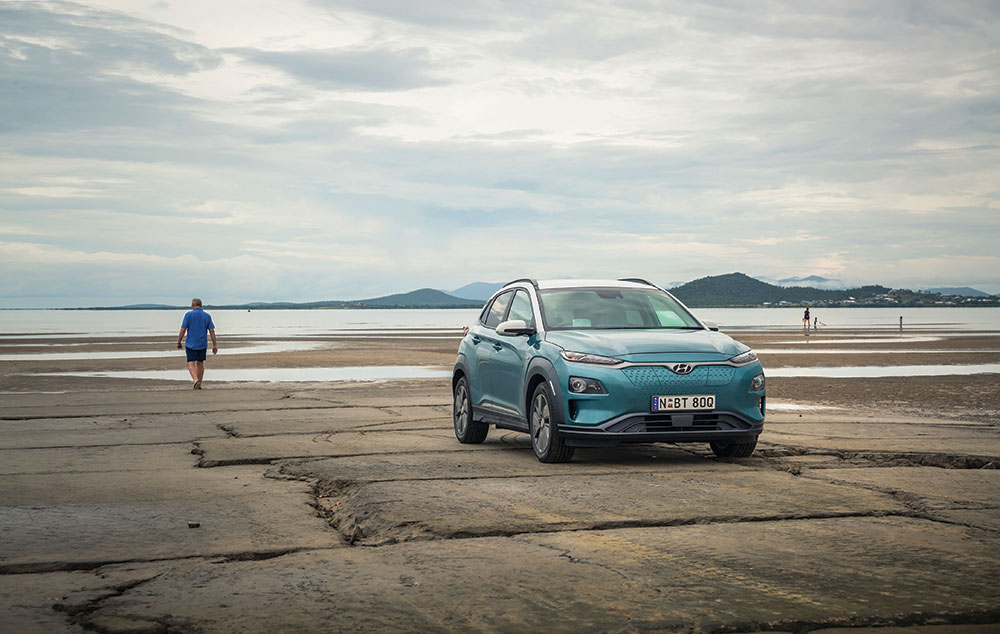
Nevertheless, it was almost dark by the time we entered the quaint, frangipani and mango-tree lined streets of Childers, having bypassed charge points at Cooroy and Maryborough.
We found the town’s Yurika charge point just off the main drag and connected to the car via a small flap on the grille before wandering up town to find some food.
In a “normal” car, we might have topped up in 10 minutes and pushed on but such enforced delays are part of life with an EV.
After coffee and breakfast the next day at the gorgeous heritage-listed Paragon Theatre, we trekked through waving sugar cane and rich red-soil paddocks.
Challenging the EV's range
A charge point beckoned at Miriam Vale but, with 223km of available range and only 170km to Rockhampton, we could make it with ease to the city that famously sits astride the Tropic of Capricorn.
It was almost dark when we unplugged there, with enough range to make Mackay, 350km to the north.
The combination of rain, trucks and roos made that seem a folly, so we opted to stop halfway at Marlborough before tackling the 610km to Townsville the next day.
The glittering nightscape of Queensland’s northern capital finally beckoned at 8.30pm, the car’s satnav leading us to a charge point occupied by a distinctly non-electric looking 4x4. We were forced to find another option 20 minutes away.
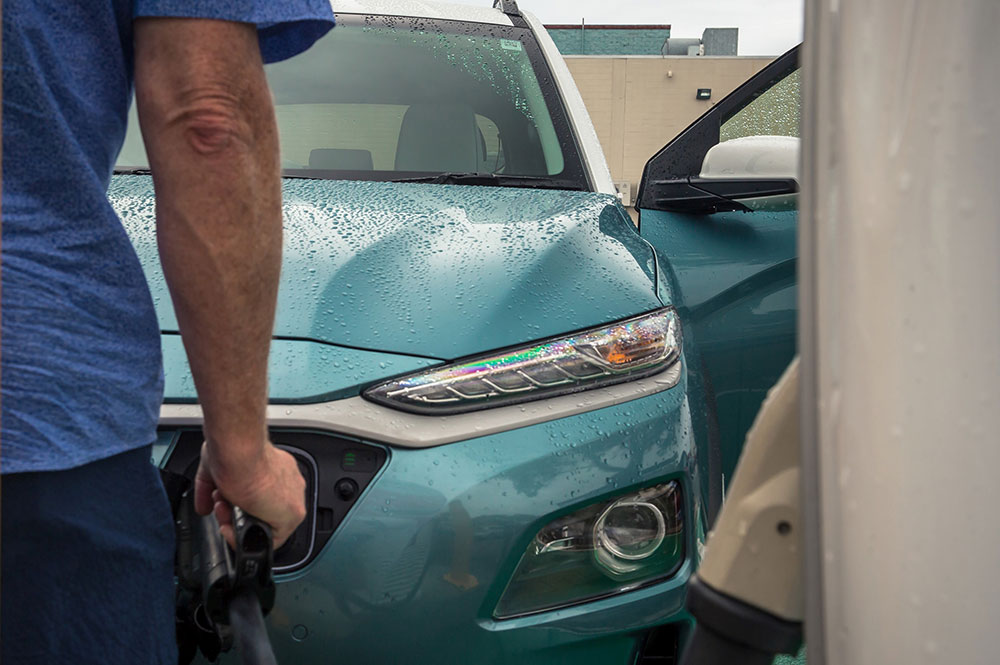
At least the next day dawned bright and clear.
We were soon whizzing up and over the Cardwell Range, past dense rainforest that plunged down to meet the croc-infested mangrove swamps of the Hinchinbrook Channel.
Crocs were on the agenda in nearby Cardwell, too, where a stop at Rob Jesse’s distinctive yellow pie cart is a must.
Cairns was only 140km away, right on the limit of our available range, so we opted to top-up in Tully, famously Australia’s wettest town.
Pushed to the limit
Unfortunately, all that rain seemed to have frizzed the town’s DC charger and we weighed up waiting hours to charge via the slower AC charger or chancing our hand.
We bit the bullet and headed off, the car’s trip computer warning us to turn back.
Switching to Eco+ in the Kona’s drive modes cut the aircon and limited speed to 80km/h as we crept along, the cabin a funk of nerves and sweat in the 34-degree heat.
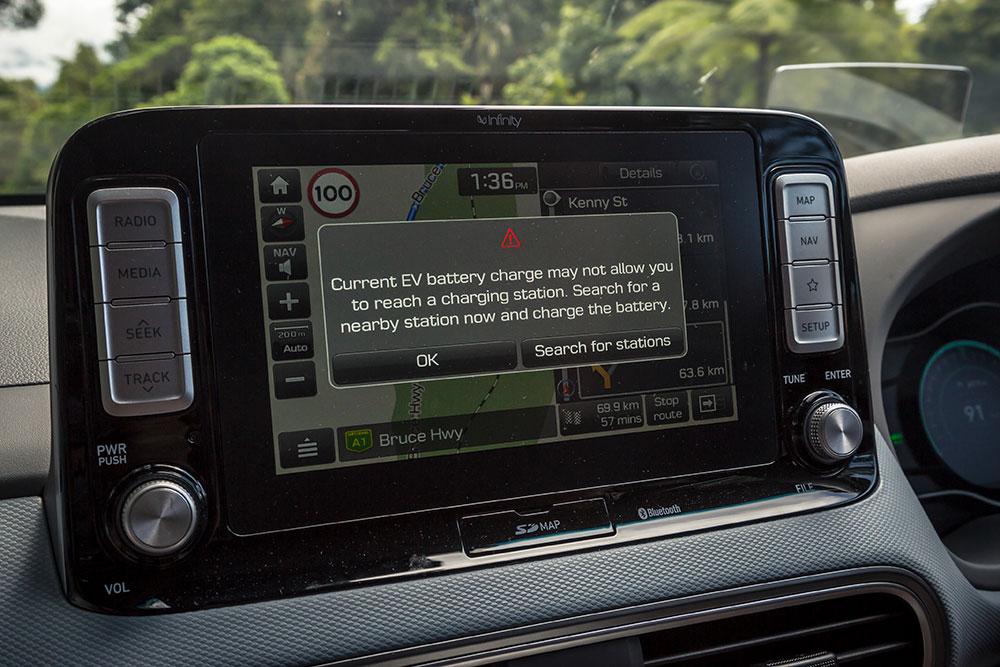
As we edged closer to Cairns, the Hyundai slowly hauled back the deficit via its regenerative braking. We eventually made the charge point with 5% battery and just 15km in reserve.
Mission accomplished, we looked back on a 2122km journey during which we’d recharged six times, for a total of about seven hours.
The Kona is an impressive car and offers a first-rate driving experience, but life with an EV on such a long journey definitely requires some compromises.
Nonetheless, our adventure has shown that such a journey in an EV is perfectly feasible, provided the infrastructure is in place to support it.
Photos: Thomas Wielecki
Power on with RACQ Roadside Assistance for your electric vehicle
Related topics
Things to note
The information in this article has been prepared for general information purposes only and is not intended as legal advice or specific advice to any particular person. Any advice contained in the document is general advice, not intended as legal advice or professional advice and does not take into account any person’s particular circumstances. Before acting on anything based on this advice you should consider its appropriateness to you, having regard to your objectives and needs.
Insurance Products (excluding Travel Insurance) are issued by RACQ Insurance Limited ABN 50 009 704 152 (RACQI) and arranged by its agent, RACQ Distribution Services Pty Ltd (RDS) ABN 35 116 361 650, AFSL 567130 and RDS' authorised representatives (including RACQ Operations Pty Ltd ABN 80 009 663 414, AR No. 234978 (RACQO). Conditions, limits and exclusions apply. RDS and RACQO are in the RACQ group of companies. One of the companies in the RACQ group of companies has a minority shareholding in RACQI.
RDS and RACQO have not taken your personal objectives, circumstances or needs into account when preparing advice regarding insurance products and you will need to consider whether the advice is appropriate for you. Read the Product Disclosure Statement (PDS) and any applicable Supplementary PDS before making a purchase decision on this product. You can also access our Target Market Determinations on this website. RDS receives a commission from RACQI for the policies it arranges. RACQO receives fees paid for services it provides to RDS. Further details about remuneration are available on request prior to purchasing.
Banking and loan products issued by Members Banking Group Limited ABN 83 087 651 054 AFSL/Australian credit licence 241195 trading as RACQ Bank. Terms, conditions, fees, charges and lending policies apply. This is general advice only and may not be right for you. This information does not take your personal objectives, circumstances or needs into account. Read the disclosure documents for your selected product or service, including the Financial Services Guide and the Terms and Conditions, and consider if appropriate for you before deciding.
Except for RACQ Bank, any RACQ entity referred to on this page is not an authorised deposit-taking institution for the purposes of the Banking Act 1959 (Cth). That entity’s obligations do not represent deposits or other liabilities of RACQ Bank. RACQ Bank does not guarantee or otherwise provide assurance in respect of the obligations of that entity, unless noted otherwise.
RACQ Bank subscribes to the Customer Owned Banking Code of Practice which establishes higher standards than the law requires. The Code reflects modern consumer expectations and developments in approaches to issues such as consumer vulnerability, guarantors, and supporting customers through financial hardship. Please read our Customer Owned Banking Code of Practice page for more information.
RACQ Operations Pty Ltd (ABN 80 009 663 414 AR 000234978) and Members Travel Group Pty Ltd (ABN 45 144 538 803 AR 000432492) are acting as an Authorised Representative of the issuer of the insurance, Tokio Marine & Nichido Fire Insurance Co., Ltd. (ABN 80 000 438 291 AFSL 246 548). Any advice set out above is general in nature only, and does not take into account your objectives, financial situation or needs. Before purchasing any travel products, please consider the RACQ Travel Insurance Product Disclosure Statement (PDS) and the Target Market Determinations (TMDs) that apply to these products. Whilst the PDS outlines the Terms and Conditions of these products, the TMDs outline the intended class of customers that comprise the target market for these travel products. This will allow you to consider which products best suit your objectives, financial situation and needs and consider the products appropriateness to your personal circumstances. TMDs also outline matters involving the distribution and the review of these products. The PDS, Supplementary PDS and TMDs for each travel product can be found here.
